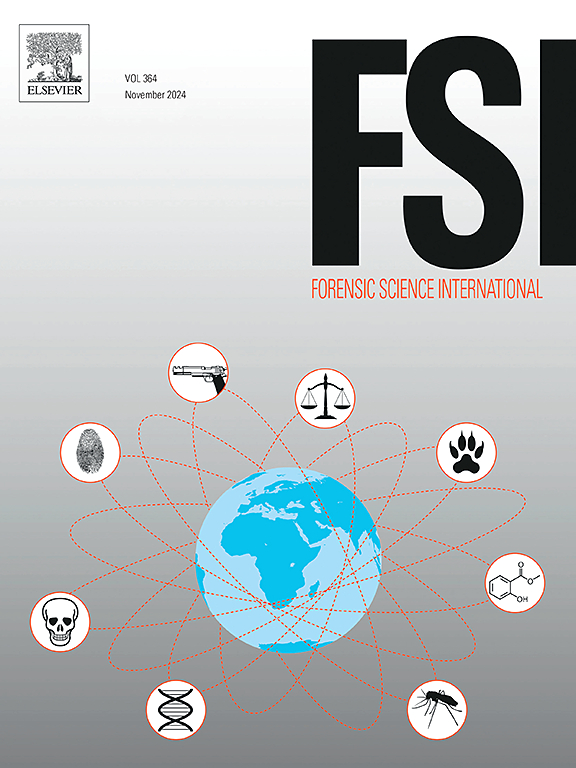在加拿大的一个人类粪便处理设施中,对与晚期腐烂有关的真菌进行分子鉴定
IF 2.2
3区 医学
Q1 MEDICINE, LEGAL
引用次数: 0
摘要
法医学研究人类遗骸的死后过程,重点是影响分解的环境因素。最近的研究强调了真菌在这方面的潜在法医学意义,但知识基础仍然有限。本研究探索了魁北克 REST[ES] 设施中与室外人体分解相关的真菌群落。研究人员利用巢式 PCR 扩增和 Illumina MiSeq 测序技术,对来自三名捐献者的 12 份干燥软组织样本的变色斑块上的真菌物种进行了鉴定。共鉴定出 12 种真菌,其中一些是以前在人类遗骸上发现的未知真菌,包括白孢菌(Leucosporidium yakuticum)、Tausania pullulans 和 Fusicolla 物种。这些真菌可能会导致组织褪色,经过纵向调查后,可作为法医重建的生物标记,包括死亡地点和时间。这项研究强调了进一步研究真菌在人类分解过程中的作用及其在法医学中的应用的必要性。本文章由计算机程序翻译,如有差异,请以英文原文为准。
Molecular identification of fungi associated with advanced decomposition at a human taphonomy facility in Canada
Forensic taphonomy investigates the postmortem processes of human remains, focusing on the environmental factors that influence decomposition. Recent studies have highlighted the potential forensic relevance of fungi in this context, but the knowledge base remains limited. This study explored fungal communities associated with outdoor human decomposition at the REST[ES] facility in Quebec. Nested PCR amplification and Illumina MiSeq sequencing were used to identify fungal species on discolored patches of twelve samples of desiccated soft tissues from three donors. Twelve fungal species were putatively identified, some of which were previously unknown on human remains, including Leucosporidium yakuticum, Tausania pullulans, and Fusicolla species. These fungi may contribute to tissue discoloration and following longitudinal investigation, could serve as biomarkers for forensic reconstructions, including place and time of death. This study emphasizes the need for further research into the role of fungi in human decomposition processes and their applications in forensic science.
求助全文
通过发布文献求助,成功后即可免费获取论文全文。
去求助
来源期刊

Forensic science international
医学-医学:法
CiteScore
5.00
自引率
9.10%
发文量
285
审稿时长
49 days
期刊介绍:
Forensic Science International is the flagship journal in the prestigious Forensic Science International family, publishing the most innovative, cutting-edge, and influential contributions across the forensic sciences. Fields include: forensic pathology and histochemistry, chemistry, biochemistry and toxicology, biology, serology, odontology, psychiatry, anthropology, digital forensics, the physical sciences, firearms, and document examination, as well as investigations of value to public health in its broadest sense, and the important marginal area where science and medicine interact with the law.
The journal publishes:
Case Reports
Commentaries
Letters to the Editor
Original Research Papers (Regular Papers)
Rapid Communications
Review Articles
Technical Notes.
 求助内容:
求助内容: 应助结果提醒方式:
应助结果提醒方式:


